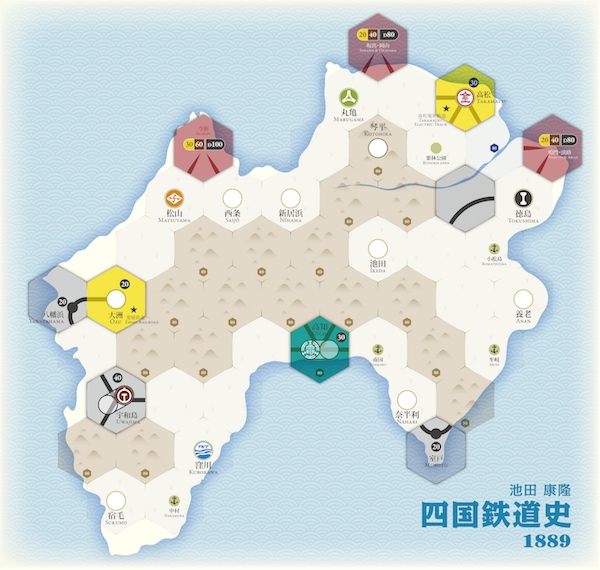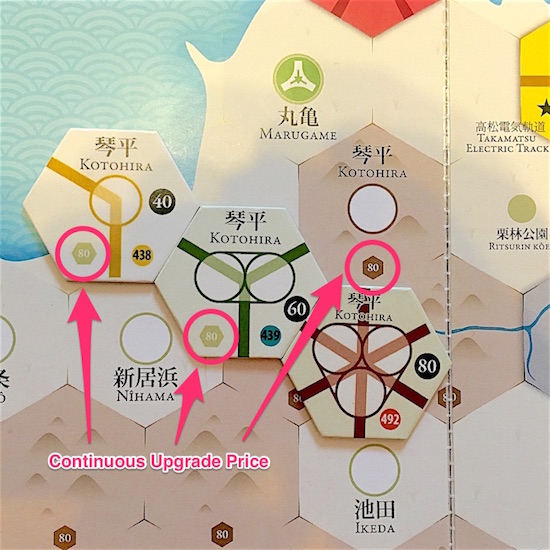The rules to 1889 are nearly identical to those of 1830. What follows is a list of notable differences to serve as refresher before play. You can also download the full set of rules and see for yourself.
The Map
At least two factors contribute to 1889 playing in signficantly less time than its 1830 counterpart: the smaller bank (¥7,000) and the smaller map (set on Shikoku, the smallest of Japan’s four major islands). Take a look at the latter below, and note the compact placement of cities.

Floating Initial Corporations
You need five shares to float a company (one less than in 1830). Take a look at my strategy section for the implications of this difference.
Kotohira Upgrade Costs
As in 1830, most upgrade costs in 1889 are one-time fees. In other words, after you pay the initial ¥80 to build track on a mountain hex, there are no additional fees as you upgrade the track from yellow to green to brown. Not so with the city of Kotohira, in the northeastern section of the map:

As you can see from the picture, the initial tile and all future upgrades cost ¥80. When you play the game, be sure to pay attention to the cost listed on each Kotohira-specific tile. When first learning the game, especially if you are using the fan-made PnP board shown above,* it is easy to overlook the prices.
* It is also important to note that the Kotohira hex is not a mountainous region despite the graphical indication otherwise (errata for this particular fan-made board as of 2 February 2017; corrected in the latest file update). Therefore, the owner of the Sumitomo Mines Railway must still pay the initial building cost for the hex.
Buy/Sell Order During a Stock Round
Unlike 1830, in 1889, you may buy and then sell or sell and then buy; but you may not sell, buy, and then sell again.
Track Upgrades
Tile upgrades in 1889 are semi-restrictive. What does this mean? In 1830, a corporation need only reach the hex where it is placing a tile upgrade (permissive). In 1889, it must be able to reach some new piece of track on the new tile, or it must be able to reach a city on the new tile that has an increased value after the upgrade (semi-restrictive). Keep in mind, the corporation does not need a train that can actually run a route to the new track, but rather a hypothetical diesel that could.
In practice, this is a minor difference, especially to new 1830/1889 players. If reading it makes no sense to you, don’t worry about it! On the other hand, if you’d like to dig deep on the subject, take a look at the sections on tile replacement in the list of “1830 Clarifications.”